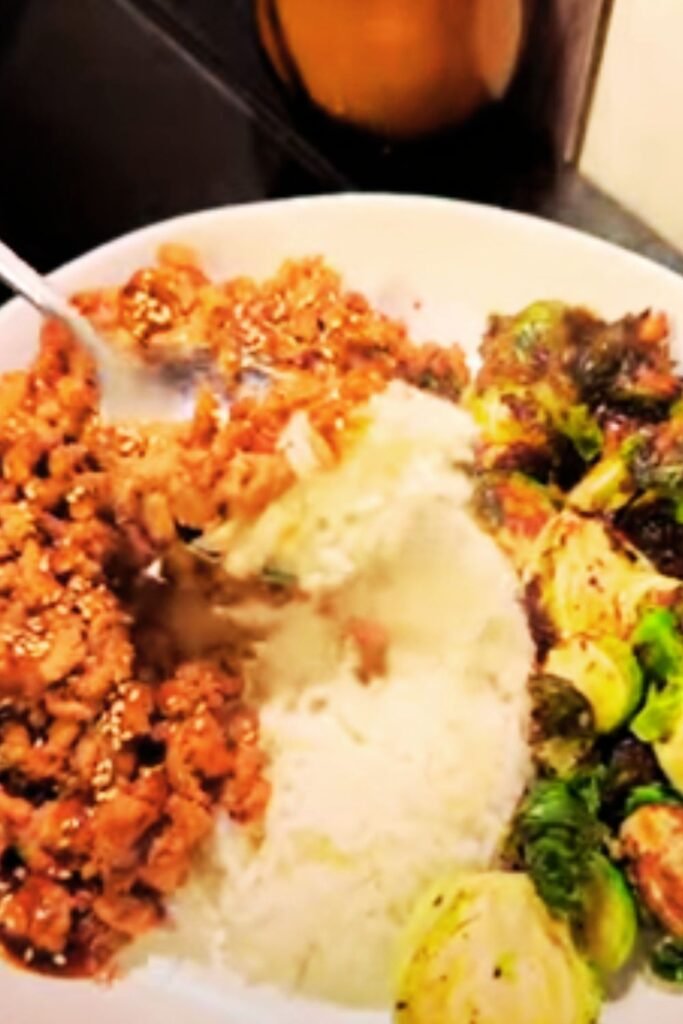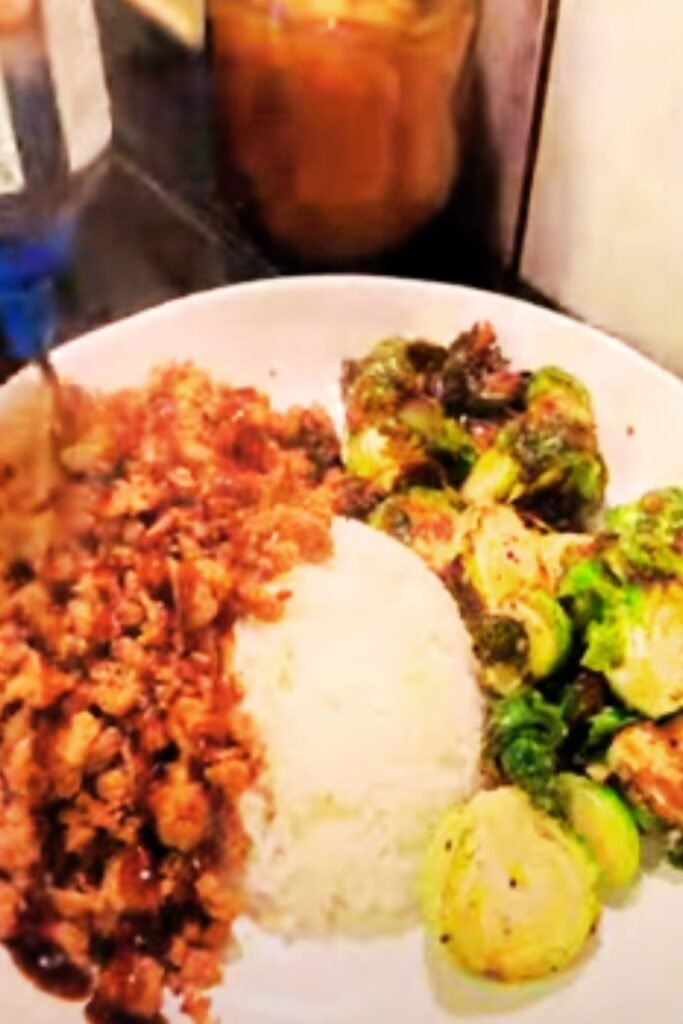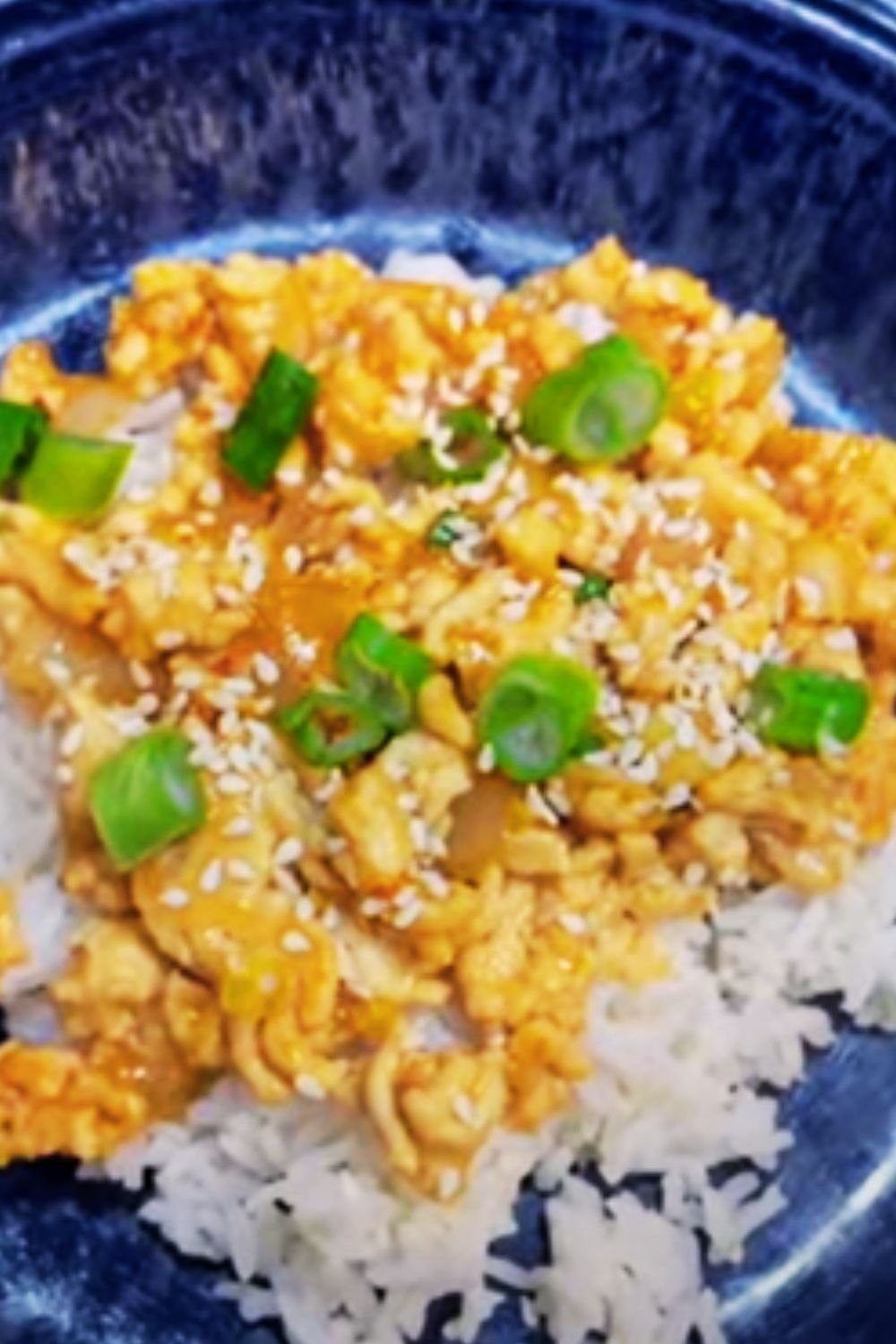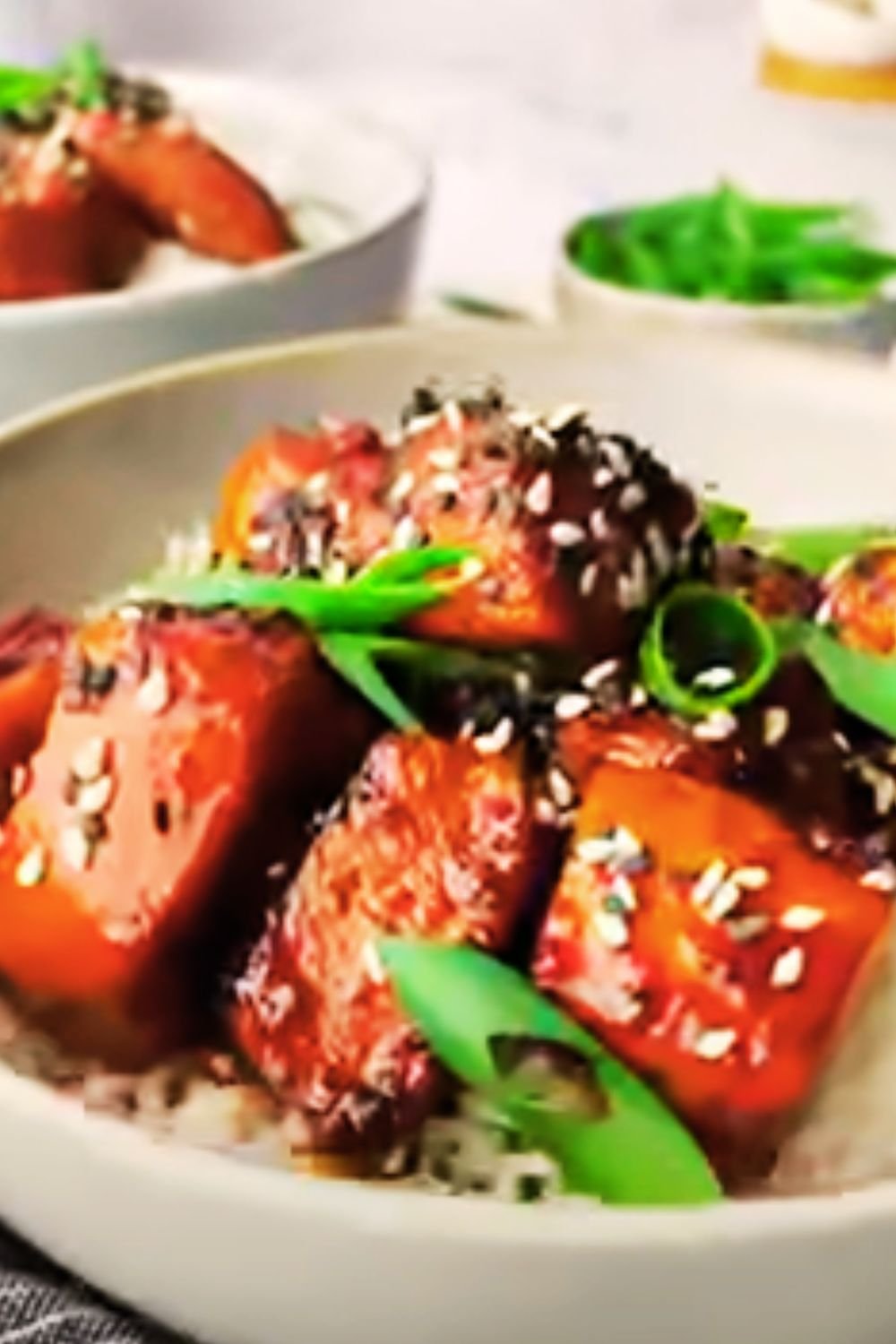Have you ever found yourself staring into your refrigerator at 6 PM on a weeknight, completely out of dinner ideas? I’ve been there too many times to count. That’s exactly why I developed this Healthy Ground Turkey Teriyaki Rice Bowl recipe – it’s become my ultimate weeknight lifesaver that combines nutrition, simplicity, and incredible flavor all in one bowl.
As someone who prioritizes healthy eating but refuses to compromise on taste, I’ve perfected this recipe through countless iterations. The combination of lean ground turkey, vibrant vegetables, and a homemade teriyaki sauce that’s lower in sodium and sugar than store-bought alternatives creates a meal that’s as nourishing as it is delicious.
What I love most about this recipe is its versatility. You can customize the vegetables based on what’s in your fridge, adjust the spice level to your preference, or even swap the rice for quinoa or cauliflower rice if you’re watching your carbs. It’s a formula rather than a strict recipe, allowing you to make it your own while still guaranteeing amazing results.
So put on your apron, pull out your favorite skillet, and get ready to create a meal that will satisfy your hunger, nourish your body, and become a regular in your dinner rotation. Trust me, this turkey teriyaki bowl is about to change your weeknight dinner game forever.
Nutritional Benefits of Ground Turkey
Before we dive into the recipe, let’s talk about why ground turkey makes this dish such a nutritional powerhouse. I switched from using beef in many of my recipes years ago, and the difference in my energy levels and overall health has been remarkable.
Ground turkey, especially when you choose the lean varieties (93% or 99% lean), offers impressive nutritional benefits compared to other ground meats:
| Nutrient | Ground Turkey (93% lean, 100g) | Ground Beef (90% lean, 100g) | Ground Chicken (100g) | Benefits |
|---|---|---|---|---|
| Calories | 170 | 217 | 143 | Lower in calories than beef, making it ideal for weight management |
| Protein | 22g | 26g | 17g | High-quality complete protein for muscle maintenance |
| Total Fat | 9g | 13g | 7g | Lower fat content than beef |
| Saturated Fat | 2.5g | 5g | 2g | Significantly less saturated fat than beef |
| Cholesterol | 80mg | 88mg | 75mg | Lower cholesterol than beef |
| Iron | 1.5mg | 2.7mg | 1.3mg | Good source of iron for oxygen transport |
| Zinc | 3.1mg | 5.4mg | 2.7mg | Important for immune function |
| Vitamin B12 | 0.4μg | 2.8μg | 0.3μg | Supports nervous system function |
| Sodium | 77mg | 75mg | 65mg | Naturally low in sodium |
What I find particularly compelling about ground turkey is that it provides an excellent protein-to-fat ratio while being incredibly versatile. The slightly milder flavor profile compared to beef makes it perfect for recipes like this teriyaki bowl where you want the sauce and seasonings to shine.
Additionally, turkey contains tryptophan, which helps your body produce serotonin – a natural mood regulator. This makes this dish not only good for your physical health but potentially beneficial for your mental wellbeing too!
The Perfect Teriyaki Sauce: Store-bought vs. Homemade

I used to grab bottles of teriyaki sauce from the grocery store without a second thought. Then one day, I checked the nutrition label and ingredients list – and was shocked by what I found. Most commercial teriyaki sauces contain:
- High amounts of refined sugar (often the first or second ingredient)
- Excessive sodium (sometimes over 300mg per tablespoon!)
- Preservatives and artificial ingredients
- High fructose corn syrup
- MSG or other flavor enhancers
That discovery sent me on a mission to create a healthier homemade version that didn’t sacrifice that perfect sweet-savory balance that makes teriyaki so irresistible. After many test batches, I landed on this recipe that’s become my go-to:
Homemade Teriyaki Sauce Recipe
Ingredients:
- ⅓ cup reduced-sodium tamari or soy sauce
- 3 tablespoons water
- 2 tablespoons honey or maple syrup (less than commercial versions)
- 1 tablespoon rice vinegar
- 1 teaspoon freshly grated ginger
- 2 cloves garlic, minced
- ½ teaspoon sesame oil
- 1 tablespoon cornstarch mixed with 2 tablespoons cold water (for thickening)
Preparation Method:
- Combine all ingredients except the cornstarch mixture in a small saucepan.
- Bring to a gentle simmer over medium heat.
- Add the cornstarch mixture and whisk constantly until the sauce thickens to your desired consistency (usually 1-2 minutes).
- Remove from heat and allow to cool slightly before using.
The difference between this homemade version and store-bought options is striking:
| Comparison | Homemade Teriyaki (1 Tbsp) | Commercial Teriyaki (1 Tbsp) | Savings |
|---|---|---|---|
| Calories | 15-20 | 30-35 | ~15 calories |
| Sugar | 3g | 6-7g | ~4g sugar |
| Sodium | 170mg | 300-320mg | ~150mg sodium |
| Cost per cup | $0.75-$1.00 | $3.50-$4.00 | ~$3.00 |
| Preservatives | None | Several | Health benefit |
| Control over flavor | Complete | None | Customization |
Beyond the nutritional benefits, making your own teriyaki sauce gives you complete control over the flavor profile. Want it spicier? Add some red pepper flakes. Prefer a stronger ginger flavor? Double the amount. The sauce keeps well in the refrigerator for up to two weeks, so I often make a double batch to have on hand for quick meals.
Equipment Needed for Turkey Teriyaki Bowls
One thing I appreciate about this recipe is that it doesn’t require any specialized equipment. Here’s what you’ll need:
- Large non-stick skillet or wok
- Medium saucepan (for rice and sauce)
- Cutting board and sharp knife
- Measuring cups and spoons
- Wooden spoon or spatula
- Rice cooker (optional but convenient)
- Mixing bowls
- Garlic press (optional)
If you’re meal prepping, you’ll also want to have food storage containers ready. I recommend glass containers with compartments to keep the components separate until ready to eat.
Complete Healthy Ground Turkey Teriyaki Rice Bowl Recipe
Now that we’ve covered the benefits of ground turkey and how to make the perfect teriyaki sauce, let’s put everything together for this delicious and nutritious bowl.
Ingredients (Serves 4)
For the Rice Base:
- 1 cup uncooked brown rice (or substitute with quinoa or cauliflower rice)
- 2 cups water or low-sodium broth
- ¼ teaspoon salt
For the Turkey Mixture:
- 1 pound (454g) lean ground turkey (93% lean recommended)
- 1 tablespoon olive oil
- 1 medium onion, diced
- 3 cloves garlic, minced
- 1 tablespoon freshly grated ginger
- 1 red bell pepper, diced
- 2 carrots, julienned or diced
- 2 cups broccoli florets, cut into bite-sized pieces
- 1 cup snap peas, trimmed
- 1 batch homemade teriyaki sauce (recipe above)
For Garnish:
- 2 green onions, thinly sliced
- 1 tablespoon sesame seeds
- ½ avocado, sliced (optional)
- Sriracha or other hot sauce (optional)
Step-by-Step Preparation Method

- Prepare the rice:
- Rinse the brown rice under cold water until the water runs clear
- Combine rice, water or broth, and salt in a medium saucepan
- Bring to a boil, then reduce heat to low, cover, and simmer for 35-40 minutes until the liquid is absorbed and rice is tender
- Remove from heat and let stand, covered, for 10 minutes, then fluff with a fork
- While the rice cooks, prepare the vegetables:
- Wash, peel, and chop all vegetables as directed in the ingredients list
- Organize your chopped vegetables into groups based on cooking time (onions first, then bell peppers and carrots, broccoli and snap peas last)
- Cook the turkey mixture:
- Heat olive oil in a large skillet or wok over medium-high heat
- Add diced onion and sauté for 2-3 minutes until translucent
- Add minced garlic and grated ginger, cooking for 30 seconds until fragrant
- Add ground turkey, breaking it up with a wooden spoon
- Cook for 5-7 minutes until turkey is no longer pink
- Add bell peppers and carrots, cooking for another 3 minutes
- Add broccoli and snap peas, cooking for 2-3 minutes until just tender but still crisp
- Pour the homemade teriyaki sauce over the mixture
- Stir to combine and coat everything evenly
- Simmer for 2-3 minutes until the sauce has thickened slightly and everything is well incorporated
- Assemble the bowls:
- Divide the cooked brown rice among four bowls
- Top each bowl with a generous portion of the turkey-vegetable mixture
- Garnish with sliced green onions, sesame seeds, and optional avocado slices
- Add a drizzle of sriracha or other hot sauce if desired
- Serve immediately or store:
- Enjoy while hot, or
- Allow components to cool completely before transferring to storage containers
- Refrigerate for up to 4 days
Cooking Tips for Perfect Results
Through my many iterations of this recipe, I’ve discovered some key techniques that make a significant difference in the final result:
- Don’t overcook the vegetables: Staggering the addition of vegetables ensures each type is cooked perfectly. Overcooked vegetables not only lose nutrients but also become mushy and unappetizing.
- Season the turkey well: Ground turkey can be bland if not properly seasoned. The combination of garlic, ginger, and teriyaki sauce adds tremendous flavor, but don’t be shy with salt and pepper during the cooking process.
- Use cold water for the cornstarch slurry: Always mix cornstarch with cold water before adding to hot liquids to prevent lumps in your sauce.
- Allow the rice to rest: The 10-minute rest after cooking allows the rice grains to firm up slightly, resulting in a better texture that’s less likely to become mushy in your bowl.
- Meal prep components separately: If making this for meal prep, consider storing the sauce separately and adding it when reheating to maintain optimal texture.
Nutritional Information Per Serving
I believe in knowing exactly what’s in my food, which is why I’ve calculated the nutritional breakdown for this recipe:
| Nutrient | Amount Per Serving | % Daily Value* | Notes |
|---|---|---|---|
| Calories | 385 | – | A balanced meal under 400 calories |
| Total Fat | 14g | 18% | Mostly healthy unsaturated fats |
| Saturated Fat | 3g | 15% | Low in unhealthy saturated fat |
| Trans Fat | 0g | – | Free of artificial trans fats |
| Cholesterol | 65mg | 22% | Moderate cholesterol level |
| Sodium | 620mg | 27% | Much lower than restaurant versions (often 1500mg+) |
| Total Carbohydrate | 40g | 15% | Balanced carbohydrate content |
| Dietary Fiber | 6g | 21% | Excellent source of fiber |
| Total Sugars | 8g | – | Primarily from natural sources |
| Added Sugars | 3g | 6% | Minimal added sugar from teriyaki sauce |
| Protein | 29g | 58% | Excellent source of complete protein |
| Vitamin D | 0μg | 0% | Not a significant source |
| Calcium | 60mg | 5% | Contains some calcium |
| Iron | 2.7mg | 15% | Good source of iron |
| Potassium | 720mg | 15% | Good source of potassium |
*Percent Daily Values based on a 2,000 calorie diet
This nutritional profile makes the turkey teriyaki bowl an excellent balanced meal that provides sustained energy, supports muscle maintenance, and contains a variety of essential nutrients from the diverse vegetables included.
Variations and Substitutions

One of the reasons I return to this recipe again and again is its incredible adaptability. Here are some of my favorite variations:
Protein Alternatives:
- Ground chicken (similar nutrition profile to turkey)
- Extra-firm tofu, crumbled (for vegetarian option)
- Tempeh, crumbled (for vegan option with additional fiber)
- Lean ground pork (slightly higher in fat but very flavorful)
Grain Base Options:
- Quinoa (higher protein content than rice)
- Cauliflower rice (lowest carb option, about 5g carbs per cup)
- Brown rice/quinoa blend (my personal favorite)
- Farro (ancient grain with nutty flavor and extra fiber)
- Soba noodles (buckwheat noodles with more fiber than white rice)
Vegetable Variations:
- Snow peas instead of snap peas
- Bok choy or napa cabbage (adds more volume with minimal calories)
- Mushrooms (add umami flavor and meaty texture)
- Zucchini or yellow squash (summer vegetables that cook quickly)
- Water chestnuts (for added crunch)
- Bean sprouts (low-calorie volume addition)
Sauce Adjustments:
- Add 1 tablespoon of peanut butter for a Thai-inspired twist
- Include orange zest and juice for a citrus teriyaki variation
- Add 1-2 teaspoons of chili garlic sauce for heat
- Use coconut aminos instead of soy sauce for a soy-free, lower sodium option
- Include a splash of mirin for authentic Japanese flavor
Dietary Modifications:
Gluten-Free Version:
- Use tamari or coconut aminos instead of soy sauce
- Verify that your cornstarch is certified gluten-free
- Serve over rice or cauliflower rice (avoid wheat-based alternatives)
Lower Carb Version:
- Replace rice with cauliflower rice or shirataki rice
- Increase the proportion of non-starchy vegetables
- Use a sugar substitute like monk fruit in the teriyaki sauce
- Add extra avocado for healthy fats that provide satiety
Vegan Version:
- Replace ground turkey with crumbled tofu or tempeh
- Use maple syrup instead of honey in the teriyaki sauce
- Add nutritional yeast for additional B vitamins and umami flavor
- Consider adding edamame for extra plant-based protein
How to Meal Prep Turkey Teriyaki Bowls
As someone who relies on meal prepping to maintain healthy eating habits during busy weeks, I’ve found this recipe to be exceptionally meal-prep friendly. Here’s my strategy for prepping and storing this dish for maximum freshness:
Sunday Prep Instructions:
- Cook a double batch of rice or grain base: Allow it to cool completely before portioning into containers. Brown rice holds up well for 4-5 days in the refrigerator.
- Prepare all vegetables in advance: Wash, chop, and store them in airtight containers with a paper towel to absorb excess moisture. Keep more delicate vegetables like snap peas separate from denser ones like carrots.
- Cook the turkey mixture without the quick-cooking vegetables: I cook the ground turkey with onions, garlic, ginger, and bell peppers, then refrigerate this base.
- Make a double batch of teriyaki sauce: Store in a glass jar with a tight lid.
- Prep garnishes: Slice green onions and store in a small container.
Assembly Throughout the Week:
Option 1: Complete bowls
- Portion rice, turkey mixture, and sauce into individual containers
- Add the quick-cooking vegetables (broccoli, snap peas) on top without mixing
- Refrigerate up to 3 days
- When ready to eat, microwave for 1.5-2 minutes, stir, and add fresh garnishes
Option 2: Component system (my preferred method)
- Store rice, turkey mixture, sauce, and vegetables separately
- Assemble a fresh bowl each day by microwaving rice first, then adding turkey mixture
- Quick-steam the vegetables separately for best texture
- Add sauce after heating components
- Finish with fresh garnishes
Storage Guidelines:
| Component | Refrigerator | Freezer | Notes |
|---|---|---|---|
| Cooked rice | 4-5 days | 2-3 months | Add 1-2 Tbsp water when reheating |
| Turkey mixture | 3-4 days | 2-3 months | Freezes very well |
| Raw prepped vegetables | 3-5 days | Not recommended | Keep in containers with paper towels |
| Teriyaki sauce | Up to 2 weeks | 1-2 months | May need to whisk after thawing |
| Assembled bowls | 3 days max | Not ideal | Vegetables will soften |
Serving Suggestions
I like to serve these bowls with accompanying sides or condiments that complement the flavors:
- Kimchi for probiotic benefits and a tangy contrast
- Pickled ginger (the kind served with sushi)
- Cucumber salad with rice vinegar and sesame seeds
- Miso soup as a starter
- Japanese-style quick pickles (tsukemono)
- Extra teriyaki sauce on the side
- Seaweed salad for iodine and minerals
For a complete meal experience, I occasionally create a themed dinner with:
- Green tea or iced jasmine tea
- Edamame appetizer
- Small dish of sliced oranges for dessert
Frequently Asked Questions
Over time, I’ve been asked many questions about this recipe. Here are the most common ones with my detailed answers:
Q: Can I use frozen vegetables instead of fresh?
Yes, absolutely! Frozen vegetables are a great time-saver and are often just as nutritious as fresh since they’re frozen at peak ripeness. Add them directly to the pan without thawing, but be aware you may need to adjust cooking times slightly. I recommend adding them after the turkey is cooked and allowing an extra 1-2 minutes of cooking time.
Q: Is ground turkey safe to eat if it’s slightly pink?
Ground turkey should be cooked to an internal temperature of 165°F (74°C) to ensure safety. Unlike beef, ground turkey should not be consumed if still pink. The color can sometimes be misleading, so I always recommend using a digital food thermometer for accuracy. When in doubt, cook it a bit longer.
Q: How can I make this recipe more kid-friendly?
For kids who might be skeptical of new dishes, I suggest:
- Serving components separately on the plate
- Reducing any spicy elements
- Making the sauce slightly sweeter (add 1 tsp more honey)
- Finely chopping vegetables to make them less noticeable
- Allowing kids to help with assembly to increase investment in the meal
- Calling it “teriyaki rice” instead of highlighting the turkey if they’re suspicious of meat
Q: Can I cook this in an Instant Pot or slow cooker?
This recipe is best suited for stovetop preparation due to the varying cooking times of components. However, you could adapt it for an Instant Pot by:
- Using the sauté function to cook the turkey and aromatics
- Adding firmer vegetables, sauce ingredients, and rice with appropriate water
- Pressure cooking for 22 minutes (for brown rice)
- Adding quick-cooking vegetables after pressure release and using sauté function again briefly This would create more of a one-pot meal rather than distinct components in a bowl.
Q: How spicy is this recipe?
As written, this recipe is very mild. The heat level comes primarily from the fresh ginger and optional sriracha garnish. You can easily adjust the spiciness by:
- Adding red pepper flakes during cooking
- Incorporating finely diced jalapeño with the vegetables
- Using more sriracha or adding chili oil as a garnish
- Including a teaspoon of gochujang (Korean chili paste) in the teriyaki sauce
Q: Is this recipe good for weight loss?
At approximately 385 calories per serving with 29g of protein and 6g of fiber, this is an excellent recipe for weight management. The high protein content promotes satiety, while the fiber from vegetables and brown rice helps you feel full longer. To reduce calories further, use cauliflower rice instead of brown rice (saving about 150 calories per serving) and 99% lean ground turkey.
Q: How do the leftovers taste? Does this recipe reheat well?
The leftovers are excellent, though the vegetables won’t be quite as crisp. For best results when reheating:
- Microwave on 70% power with a damp paper towel over the container
- Add a small splash of water before reheating to create steam
- Stir halfway through heating
- Add fresh garnishes after reheating Some people (myself included) even enjoy this dish cold as a lunch option!
Why This Recipe Works: The Science Behind the Flavors
As I’ve refined this recipe over time, I’ve come to understand the food science that makes it so successful:
- Browning reactions: Cooking the ground turkey at medium-high heat promotes Maillard reactions, creating new flavor compounds that add depth and complexity.
- Aromatics first: Starting with onions, garlic, and ginger builds a flavor foundation. These ingredients contain volatile compounds that infuse the oil and season everything cooked subsequently.
- Balanced sauce profile: The teriyaki sauce works because it hits all five basic tastes:
- Sweet (honey)
- Salty (soy sauce)
- Sour (rice vinegar)
- Bitter (slight bitterness from garlic)
- Umami (soy sauce and additional umami from turkey)
- Textural contrast: The combination of tender rice, chewy meat, and crisp-tender vegetables creates a more satisfying eating experience than uniformly textured foods.
- Color psychology: The vibrant colors from various vegetables not only indicate nutritional diversity but also stimulate appetite and enjoyment through visual appeal.
Understanding these principles has helped me create a dish that satisfies on multiple levels – not just nutritionally but also in terms of sensory experience.
In conclusion, this Healthy Ground Turkey Teriyaki Rice Bowl has become one of my go-to recipes for good reason. It’s nutritionally balanced, infinitely customizable, budget-friendly, and most importantly, absolutely delicious. Whether you’re cooking for yourself, your family, or meal prepping for the week ahead, I’m confident this recipe will find a regular spot in your rotation, just as it has in mine.
Give it a try and feel free to make it your own. After all, the best recipes are the ones that evolve to suit your personal preferences and lifestyle. Happy cooking!



